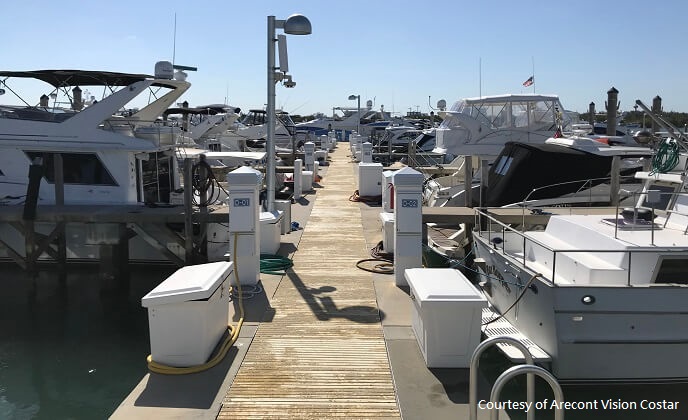What role does video surveillance play on cruises and ferries?


Cruise ships and ferries serve as an important means of transportation across the globe. Yet they are also subject to real threats. Criminal activities or terrorist attacks are some examples. Meanwhile, the safety of passenger is another concern, amid man overboard reports from time to time. These threats emphasize the importance of video surveillance and cruise ship cameras, which can play a key role in the vessel's security.

Jumbi Edulbehram,
Regional President,
Americas, Oncam
Areas to be covered
Coverage should be provided to common as well as sensitive areas. “The Cruise Vessel Security and Safety Act of 2010 states that the vessel's video surveillance system must cover all areas of the ship where passengers or crewmembers have common access, which can prove useful in a variety of incidents, such as vandalism, slip-and-fall claims, missing persons inquires and general business operations. These areas include embarkation areas, corridors, public rooms, entry points to the ‘out of bounds’ areas for passengers such as crew areas, machinery spaces and common deck areas like the pool or promenade,” said Jumbi Edulbehram, Regional President for Americas at Oncam.
“All boarding areas for crew, suppliers, and passengers should be monitored, as should sensitive crew-only areas such as the bridge, communications room, security control center, fire control center, engineering and mechanical spaces, muster stations and external structures. These spaces should be under watch of highly visible cameras for the deterrent factor. Public areas where passengers are allowed need to be monitored, covered by low profile or other less visible cameras for passenger comfort,” said Jeff Whitney, VP of Marketing at Arecont Vision Costar. “Just as in a building or hotel, private staterooms and restrooms must not be covered, but access routes to them should be.”
Types of cameras preferred
Given the unique structure and layout of a cruise liner or ferry, cameras that can cover a wide area and offer panoramic views are ideal. “Cruise ships and ferries are designed to be packed with paying passengers and the commodities that they will consume or purchase during the voyage. Space aboard ship is therefore extremely limited for other purposes, including areas for cameras to be deployed and conduits or cable trays for the necessary wiring,” Whitney said. “In narrow spaces, such as gangways, exterior decks or corridors, twin sensor megapixel cameras are a good choice, able to cover both directions with a single camera, cable, IP address and VMS license. For large open areas, a panoramic multi-sensor can cover the same area as a PTZ or multiple single sensors, but again with only a single camera, cable, IP address and VMS license.
Cruises and ferries should implement a robust mix of panoramic 180- and 360-degree cameras to provide extensive coverage around the vessel, as well as strategically placed specialty cameras (for example IR or thermal) at specific locations such as the outside of the deck railings. 180-degree cameras are ideal for wall-mount applications, such as those found in long corridors, enabling security personnel to obtain a clear view of passengers’ faces. 360-degree cameras provide extensive coverage of large areas such as the decks and athletic facilities, increasing situational awareness and allowing for real-time security and safety monitoring,” Edulbehram said.
Meanwhile, as cruise ships and ferries travel on open seas, certain conditions should be considered. “Environmental factors – such as vibration and moisture – can be significant issues aboard ship. Due to the potential for water, dampness and humidity, cameras aboard ship should always either be IP66-rated or mounted within a weather rated enclosure, even in interior spaces,” Whitney said.

Jeff Whitney, VP, Marketing,
Arecont Vision Costar
Source: A&S International Magazine
















